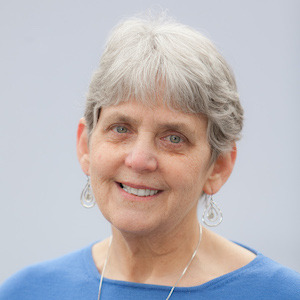Mary CarskadonNobel Conference 60

Mary Carskadon
Professor, Psychiatry and Human Behavior, Brown University
Clock, Hourglass, and Teen Sleep
If you call yourself an early bird or a night owl, find yourself googling strategies for catching up on sleep after an all-nighter, or weigh in on whether we should get rid of daylight saving time, your thinking has been shaped by the work of psychologist Mary Carskadon.
Carskadon’s contributions to the field of sleep research have had–and continue to have–a profound impact on the understanding of sleep patterns, daytime “sleepiness,” and health. Although she did not immediately see “sleep science” as her life’s work, she would later describe a moment in which she fell in love with “the beauty of a u-shaped set of data” that elegantly revealed the relationship between REM sleep and daytime sleepiness. Her early work emerged from the data she collected at Stanford’s “Sleep Camp.” At Sleep Camp, Carskadon’s research subjects–preteens and teens–participated in the activities typical of an ordinary summer camp, but with a twist: their sleep stages were monitored under different conditions. Her resulting dissertation, which explored how one’s sleep needs and patterns vary across the lifespan, confirmed that people who miss out on quality sleep do experience a “sleep debt.” Surprisingly, the research also showed that adolescents experiencing puberty need more sleep and sleep differently than younger children. In more recent years, she and her colleagues have continued to explore the ways in which “sleep debts” and their impacts on alertness can have both personal and public consequences–sometimes catastrophic ones.
Carskadon has used her groundbreaking research findings to inform and influence public policy. For example, her findings overturned the “common sense” understanding that young children need more sleep than teens. In fact, she established that many teens are chronically tired because of the ways in which school schedules and other responsibilities are “mismatched” both with their bodies’ increased need for sleep and the alignment of their “sleep phases.” Carskadon recommended flip-flopping the standard school start time, so that elementary school children started school earlier and high school students began their days later. This change, she argued, would allow high schoolers to wake up later in the morning, giving their adolescent bodies the rest they needed. In 1996, the superintendent of the Edina school district acted on this recommendation and moved Edina High School’s start time from 7:25 to 8:30 am. Anecdotally, the teachers and staff noticed an immediate improvement in students’ attention, health and behavior, which was confirmed in a longitudinal study. Based on these results, schools across the country began to adjust their school schedules.
As this snapshot into Carskandan’s work suggests, her research has not only provided a foundation for our scientific understanding of how our sleep patterns shift across our lifespans, but also how empirical studies of sleep might shape how we make choices about how we structure our daily lives and institutional structures. In addition to her continued contributions and leadership in the field of “sleep science”, she actively collaborates with and supports earlier career researchers in pursuing new lines of inquiry ranging from how access to green spaces impact sleep to the relationship between sleep and ADHD to how the elderly experience sleep.
Mary Carskadon is the Director of the Sleep and Chronobiology Research Lab at E.P. Bradley Hospital and Professor of Psychiatry and Human Behavior at Brown University. She holds a PhD in neuro- and biobehavioral sciences from Stanford University.
Her Lecture
One of my favorite quotes comes from a book by Mary Gordon where she describes adolescent sleep as ‘long, dark and sullen.’ With several decades of research, I and my team have been able to identify biological processes that produce this phenomenon that Gordon paints so vividly. Adolescents don’t need less sleep than in their pre-teen years, but when they sleep transitions to a later time. We know that sleep is regulated by two intrinsic factors: circadian rhythms (clock) and a homeostatic drive (hourglass), and the way these work changes during adolescence. The circadian clock is set later in teens, and the sleep drive across waking builds more slowly for adolescents. These findings indicate that changed biological processes allow teens to stay awake later and longer, even though they still need the same amount of sleep as before. Thus, the system craves longer and later sleep that is very deep if occurring on the heels of sleep loss. I will describe the research behind these conclusions and add to them the social and psychological factors facing adolescents that contribute to a ‘perfect storm.’